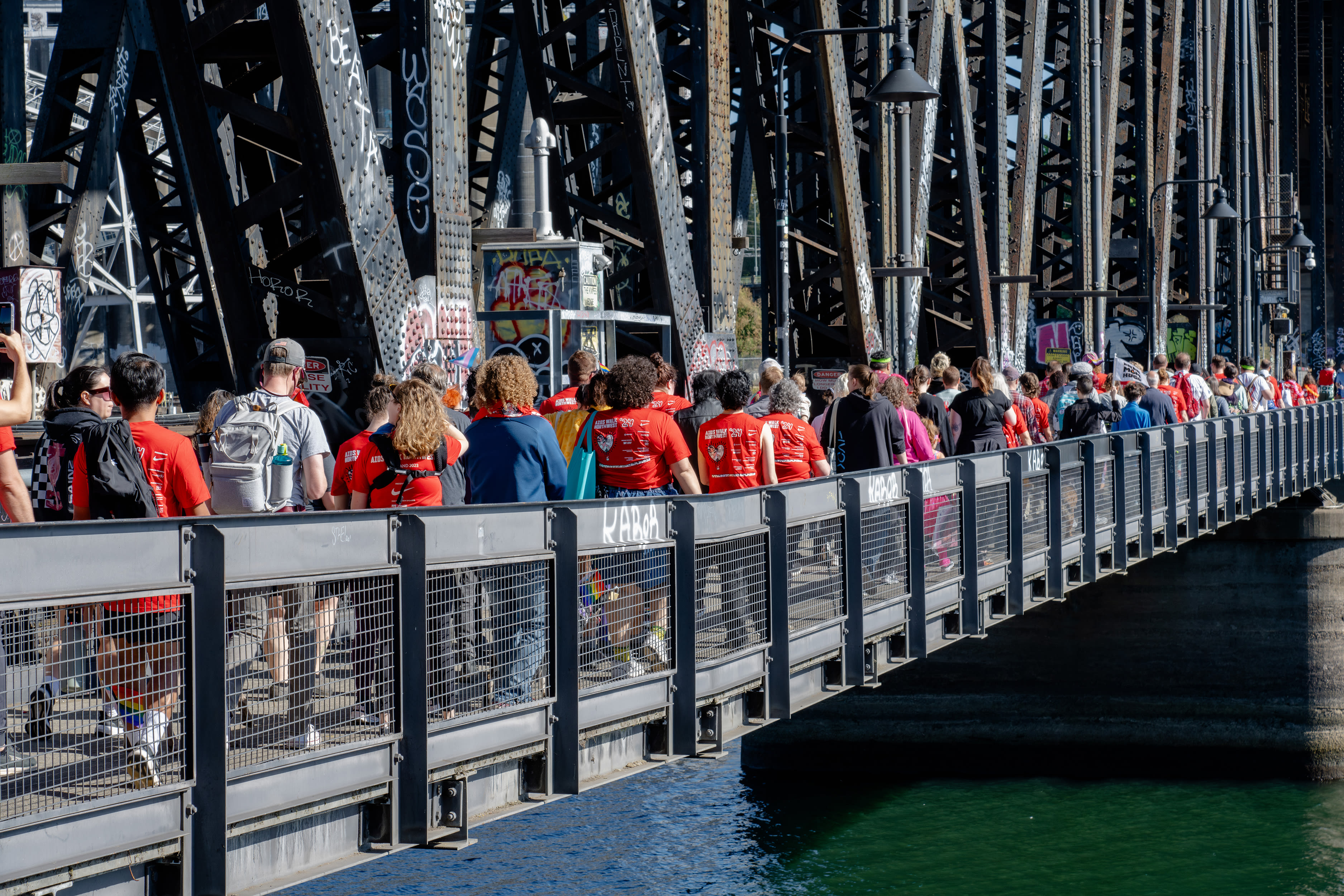Volunteering at a Mass Vaccination Clinic in Oregon Could Get You Your COVID Shot Early

Volunteering at a mass vaccination clinic helping the community—and gets you an early shot at a COVID vaccine.
Image: solarseven/Shutterstock
So many thousands of Oregonians have signed up to volunteer at the metro area’s mass vaccination clinics that there is now a waitlist for helping out. After all, volunteering means being a small part of a history-making moment, with hundreds of thousands of people rolling up their sleeves in pursuit of a common goal: herd immunity. And there’s an additional motivation: In Oregon, signing up as a community volunteer means you’ll get a shot at getting your shot.
As per guidance from the Oregon Health Authority, volunteers are part of group 1A, says Dr. Renee Edwards, the chief medical officer at Oregon Health & Sciences University, since they are “engaging in a health care environment.” “We need a whole army of volunteers to help us with this effort,” Edwards says. “We can’t get all Oregonians vaccinated without lots of people to help.”
On a recent Saturday at the OHSU drive-up clinic at the Portland Airport, a mix of hospital staff and community volunteers were on duty checking people in, directing traffic, and monitoring any post-shot adverse reactions. It’s too big a job for hospital staffers, who’ve already worked untold amounts of overtime during the pandemic, to handle alone, especially given that they still have important day jobs.

A double rainbow over the medical tents at the drive-up mass vaccination clinic at the Portland International Airport on Saturday, February 20, 2021.
Image: Julia Silverman
And yet, asking people to volunteer is a departure from the traditional messaging that we’ve come to expect from health care leaders over the past year, including to stay away from large groups of people. Offering vaccines to volunteers, along with hospital-grade protective equipment, is one way to ease people’s safety-related concerns about helping out, and to keep them coming back, which in turn cuts down on time spent training new volunteers.
The hope, Edwards says, is that once they’ve been offered the chance to get their vaccine, volunteers will keep showing up: “They themselves have been given a gift, and an opportunity,” she says. “They can pay it forward.”
So far in the Portland area, 3,593 people have applied to volunteer at the high-volume clinics, Edwards says, and 2,081 have been cleared to volunteer. (Background checks for the remainder are still underway, which can take up to 11 business days to complete.)
The state is not keeping track of exactly how many volunteers have received vaccines, says Jonathan Modie, a spokesman for the Oregon Health Authority. Though the pace of vaccination has picked up recently in the state, doses are still in short supply. Eligibility expanded this week to include those 70 and older, but available appointments were snatched up Monday morning within an hour or so.
Meanwhile, Oregon Health Authority director Patrick Allen told reporters last week that though the Latino community accounts for 26 percent of the state’s COVID-19 cases, double their share of the population, they have so far received just 5 percent of the overall shots.
Edwards says the hospital systems did not make targeted appeals to historically underserved groups when it put out the call for volunteers, but instead cast as wide a net as possible, in order to get the proverbial boots on the ground, and get clinics up, running and fully staffed quickly, given the life-and-death stakes.
Each state has approached the question of whether to vaccinate volunteers differently, she says. In some places, for example, the effort is being coordinated on a statewide level, with assistance from the National Guard, and there is less need for community volunteers. In Oregon, by contrast, hospital systems, pharmacies, and community health centers are standing up the vaccination clinics.
Now, the Federal Emergency Management Agency is working with Oregon officials to assess the needs as the state works to ramp up its vaccine clinics, and may send staff to assist with the roll-out. A robust federal presence could reduce the need for community volunteers and give health care workers a needed break, Edwards says, but won’t last forever. The vaccine effort, she says, is “a marathon,” and volunteers need to keep coming back, in May, in June and beyond.
Not every volunteer will automatically get vaccinated during their first shift, Edwards cautions—it depends on the availability of doses at a particular site. (In the metro area, there are mass clinics at the Oregon Convention Center, the Portland Airport, and Hillsboro Stadium.) Your shot might come on your second or third shift, but you will be on the list.
The ability to volunteer does require people to have childcare available and/or be able to take time from their paying jobs, Edwards acknowledges, which could reduce the pool of who is more able to volunteer. Volunteers are most needed, she says, to help actually administer shots, which requires some medical training; there’s also a need for people to help with computer registrations, which requires training with electronic medical record-keeping.
If you haven’t signed up and still want to help out, please do, and don’t be discouraged by the backlog, Edwards says. There’s no guarantee that current volunteers will be able to keep up their shifts for months on end, and the pool of volunteers will inevitably need to be replenished, particularly as the vaccine supply increases in coming months.




